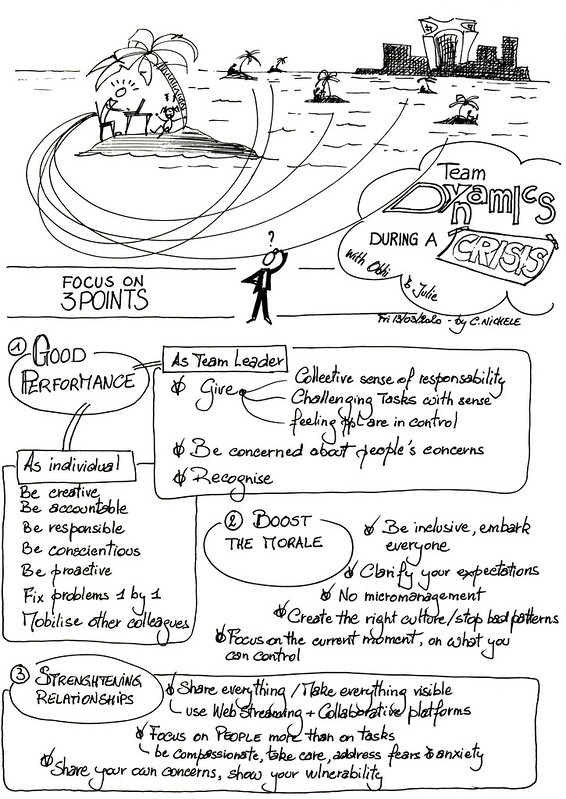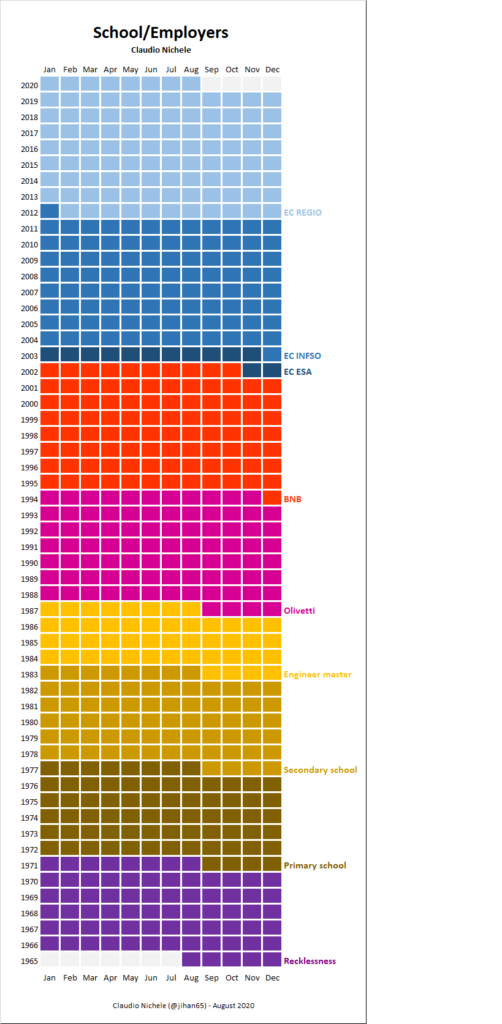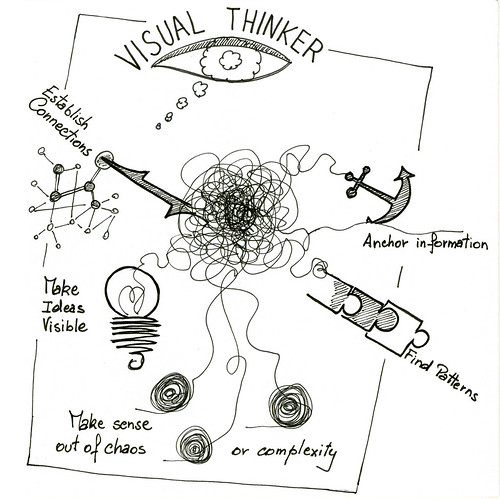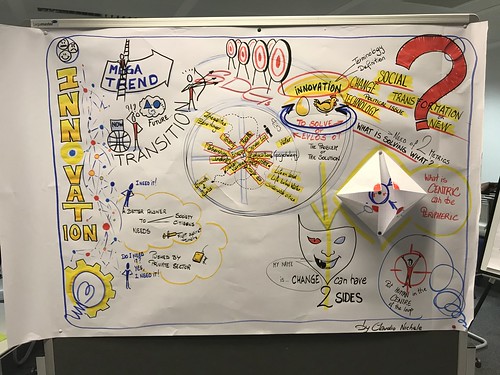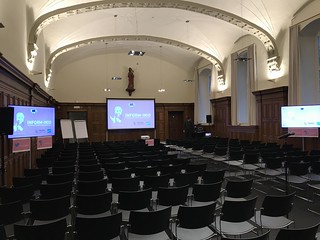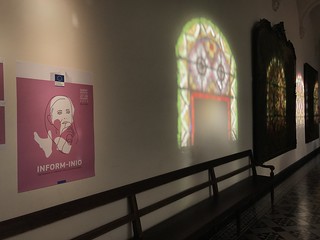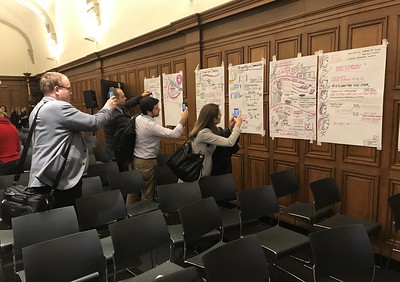Aujourd’hui encore, 14 avril 2020, la presse belge a continué de nous rassurer au sujet de l’augmentation du nombre de décès COVID19 dans le pays. Un peu pour rassurer la presse étrangère qui s’en inquiète. Mais surtout pour rassurer la population belge qui commence à se demander si on lui dit bien toute la vérité sur les mesures prises pour la protéger contre la pandémie du coronavirus.
Alors que depuis le début de la crise en Europe, la situation italienne est présentée comme une des plus “catastrophique”, j’ai voulu me faire ma propre opinion en comparant les courbes de décès dus au COVID19 en Belgique et en Italie. Pourquoi les courbes de décès et pas celles des cas COVID19? Parce que, selon moi, les données sur le nombre de décès sont les seules qui soient vraiment comparables de pays à pays. Les méthodes utilisées par les pays, et par les régions dans un même pays, pour comptabiliser les cas de personnes infectées au COVID19 sont loin d’être identiques pour fournir des données qui puissent être comparées.
Pour mon analyse, j’ai utilisé les chiffres officiels publiés par les autorités sanitaires belges et italiennes à la date du 13 avril (voir les sources à la fin de l’article). J’ai écarté les chiffres pour les 2 derniers jours (12-13 avril) car ils étaient trop bas par rapport aux jours précédents (données certainement encore incomplètes). Mon analyse utilise donc les données publiées par les 2 pays sur une période qui part à la date où le décompte des morts COVID19 a débuté dans le pays, le 23 février en Italie et le 10 mars en Belgique, et se termine au 10 avril inclus.
Voici les courbes pour les deux pays. Elles sont identiques à celles publiées par les media, et nous sont – malheureusement – bien connues.
Nombre de morts en Belgique du 10 mars au 10 avril 20
Nombre de morts en Italie du 23 février au 10 avril 2020
Les courbes ne peuvent pas être comparées à cause de la différence démographique entre les deux pays, ensuite à cause de l’échelle du temps qui n’est pas la même.
Différences démographiques
La Belgique compte 11,5 millions d’habitants, l’Italie en compte un bon 5 fois plus avec ses 60 millions. La logique mathématique indique que le nombre de décès COVID19 est exactement 5 fois supérieur en Italie. Mais ce ratio est trompeur car il est basé sur des périodes de comptage différentes.
| Belgium | Italy | Ratio | |
| Population on 01/01/2019 | 11476279 | 60359546 | 5.3 |
| Deaths on 10/04/2020 | 3755 | 18849 | 5.0 |
Différences dans la durée de la crise
La crise du coronavirus et le décompte des morts a débuté en Italie 16 jours avant celui de la Belgique. A la date du 10 avril, les italiens ont donc du déplorer des morts pendant plus de jours (48) qu’en Belgique (32).
| Belgium | Italy | Ratio | |
| Population on 01/01/2019 | 11476279 | 60359546 | 5.3 |
| Deaths on 10/04/2020 | 3755 | 18849 | 5.0 |
| Death count start date | 10/03/2020 | 23/02/2020 | |
| Number of days on 10/04 | 32 | 48 | 1.5 |
| Average deaths per day | 117 | 393 | 3.3 |
La moyenne des décès par jour en Italie (393) est 3 fois supérieure à celle en Belgique (117). C’est normal me direz-vous, le pays compte beaucoup plus d’habitants. Les ratio par habitants et par jours ne sont que les résultats de divisions mathématiques basés sur des données qui ne sont pas normalisées.
Essayons d’y voir plus clair en trouvant une base de comparaison qui soit indépendente des différences démographiques et du nombre de jours de crise.
Nombre de décès par 100000 habitants
Le premier ajustement est de rapporter le nombre de décès de chaque pays à 100000 habitants afin de se libérer de la différence démographique entre les deux pays:
| Belgium | Italy | Ratio | |
| Population on 01/01/2019 | 11476279 | 60359546 | 5.3 |
| Deaths on 10/04/2020 | 3755 | 18849 | 5.0 |
| Deaths per 100K population | 32.72 | 31.23 | 0.95 |
Première constatation inquiétante: le ratio qui était de 5 morts COVID19 en Italie pour un en Belgique chute à 0,95. Cela signifie que le nombre de décès ramené à 100000 habitants est plus élevé en Belqique (32,72) par rapport à l’Italie (31,23). Pas de beaucoup, mais 1,05 supérieur quand même (au lieu de 5 fois inférieur).
Les courbes du nombres de morts COVID19 ramenés à 100000 habitants sont:
On voit que la courbe (bleue) des décès en Belgique rattrape celle (rouge) de l’Italie à la date du 9 avril, et la dépasse ensuite. La droite qui indique la tendance (trend line) en Belgique est clairement plus pentue que celle de l’Italie, ce qui indique une croissance du taux de mortalité plus élevée en Belgique. Mais les périodes mises en comparaison sont encore différentes.
Nombre de décès par 100000 habitants sur une même période de temps
Le deuxième ajustement est de faire en sorte que la date du début des deux courbes coincide au même jour N°1 en faisant glisser de 16 jours en arrière la courbe de la Belgique.
Dans le graphique précédent, la courbe pour l’Italie démarre au 23 février et elle court sur 48 jours jusqu’au 10 avril, date de la fin de mon analyse des données. Pour la Belgique, la courbe démarre le 10 mars, soit 16 jours après, et elle court sur seulement 32 jours.
Avec les deux courbes qui commencent le même jour, le jour N°1, j’ai affiché les données que pour les 32 premiers jours des deux pays (la Belgique n’en ayant plus après). Les courbes résultantes sont:
L’autre constatation, encore plus inquiétante, est que la courbe (bleue) des décès COVID19 pour 100000 habitants en Belgique augmente effectivement beaucoup plus fort que celle (rouge) en Italie durant leurs 32 premiers jours de crise coronavirus.
Qu’en penser?
On nous a dit que la situation en Italie était une des plus “catastrophique”, car les italiens ont été les premiers à devoir affronter le coronavirus en Europe, parce que leur système de santé n’est pas celui de la Belgique, etc. On nous rassure que tout va bien, “on gère”, parce que le taux d’occupation des lits en soins intensifs en Belgique est sous contrôle, sous les 60%.
Mais alors dites-moi. Je ne dois pas m’inquièter de l’évolution de la courbe des décès COVID19 en Belgique? Et selon vous, dans quel pays entre l’Italie et la Belgique la situation semble vraiment être la plus “catastrophique”?
Je pose les questions!
Source:
- Portail Nuovo coronavirus du ministère de la santé italien (Ministero della Salute): http://www.salute.gov.it/nuovocoronavirus
- Site Coronavirus COVID-19 du SPF Belgique: https://www.info-coronavirus.be/fr/
- Covid-19 Belgium Epidemiological Situation (Sciensano): https://epistat.wiv-isp.be/covid/covid-19.html


